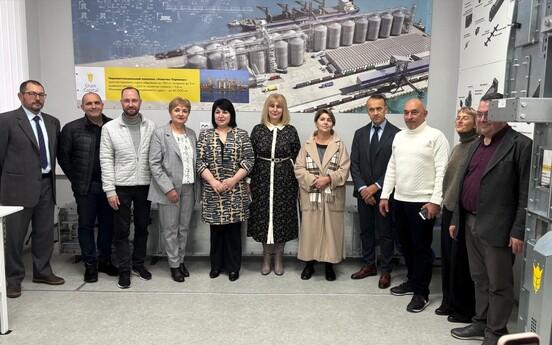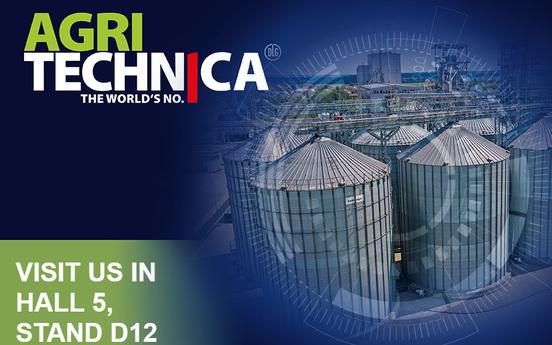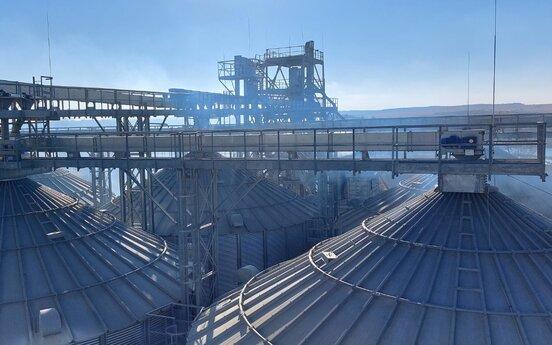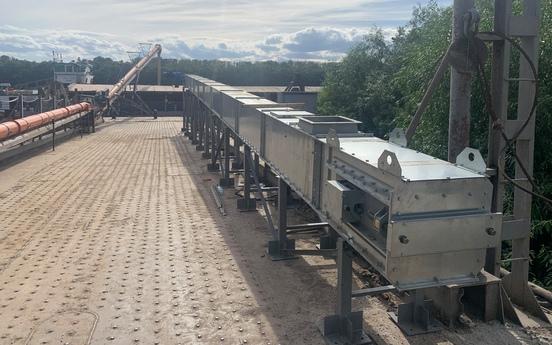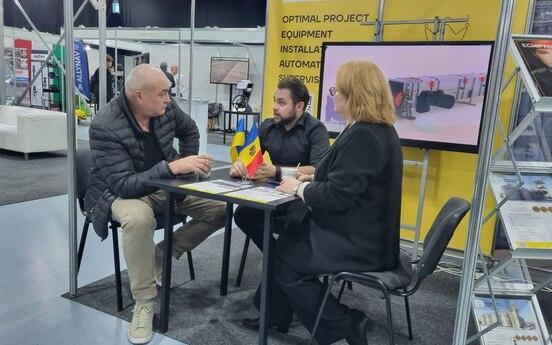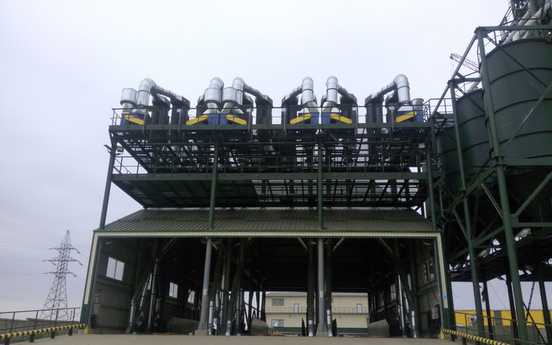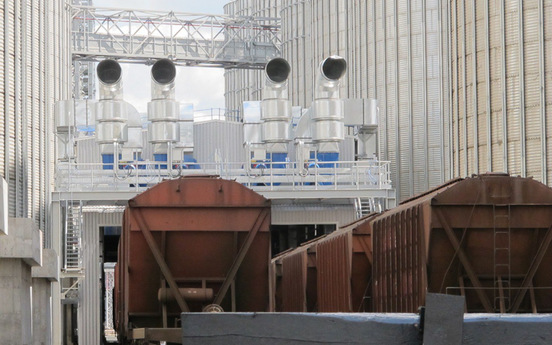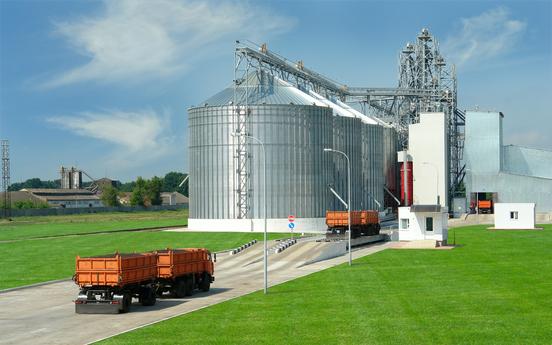Secrets of elevator design - how to start a successful business

A successful grain elevator business starts with the design, selection of the land plot and equipment for the future grain storage facility. These are very important stages in the realization of a global construction project. A mistake at any of them can be very expensive in the future.
Grain Capital held a business forum "Secrets of elevator design" in Odessa, where the company's specialists tried to reveal the problems of the first stages of elevator construction as much as possible.
"We tried to inform you about such a spectrum of tasks and reveal such a problematic, so that everyone could find for himself the point that will warn against unnecessary costs and will lead the business to maximum profitability," Grain Capital director Oleg Gaponyuk said in his opening speech at the opening of the forum.
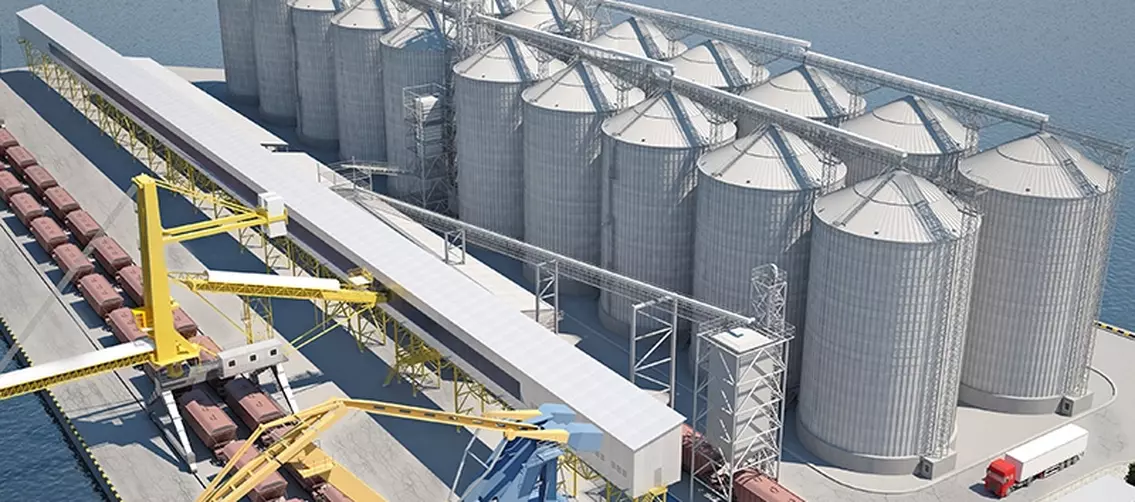
Technological scheme of the elevator elevator
Even at the stage of forming the design task it is necessary to draw up a technological scheme of the future enterprise. It should provide the necessary set and volume of operations to be realized at the elevator.
The functionality of the technological scheme should be coordinated with the conditions of the construction site of the enterprise - for example, the scheme of vehicular traffic on the elevator should allow free maneuvering without crossing various production flows. The scheme should also be coordinated with the planned activities of the future grain storage facility - for handling 5,000 tons of grain there is no need to build an elevator for 30,000 tons.
"That is why Grain Capital's project management specialists analyze the elevator construction task received from the customer for its compliance with the efficient use of existing production capacities and adjacent infrastructure to form the optimal proposal. The result of the analysis is always a balance between the customer's wishes and the possibilities of the site," says Igor Bilan, Chief Process Engineer of Grain Capital Design Office.
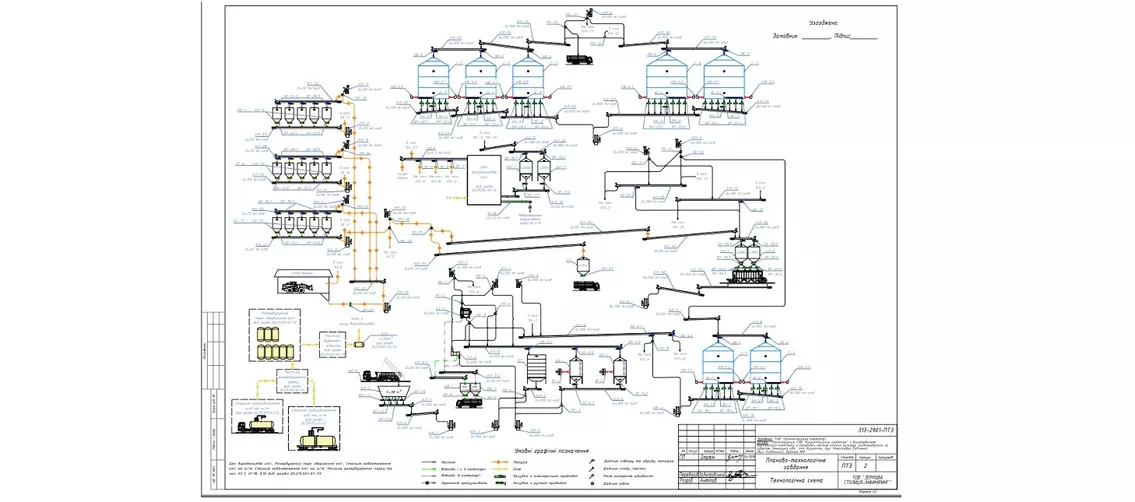
According to him, the optimal technological scheme must necessarily:
- comply with the requirements of safe operation, construction and technological norms;
- provide a full range and scope of functions (receiving, cleaning, drying, storage, shipment);
- take into account available transportation infrastructure, prospects and opportunities for its development;
- to have a minimum length of technological lines;
- ensure uninterrupted operation of the enterprise even in case of failure of individual units of equipment;
- enable repair work to be carried out without the use of special devices;
- provide acceptable competitive cost of operations.
"The functionality of the technological scheme forms the cost of construction. The wider the range of functions of the equipment, the more interchangeable it is, the more capital investments will be required. Consequently, we have to find a balance between the maximum capabilities of the technological scheme and the cost of its implementation - here the choice is up to the customer, because everyone has their own development priorities," said Igor Bilan.
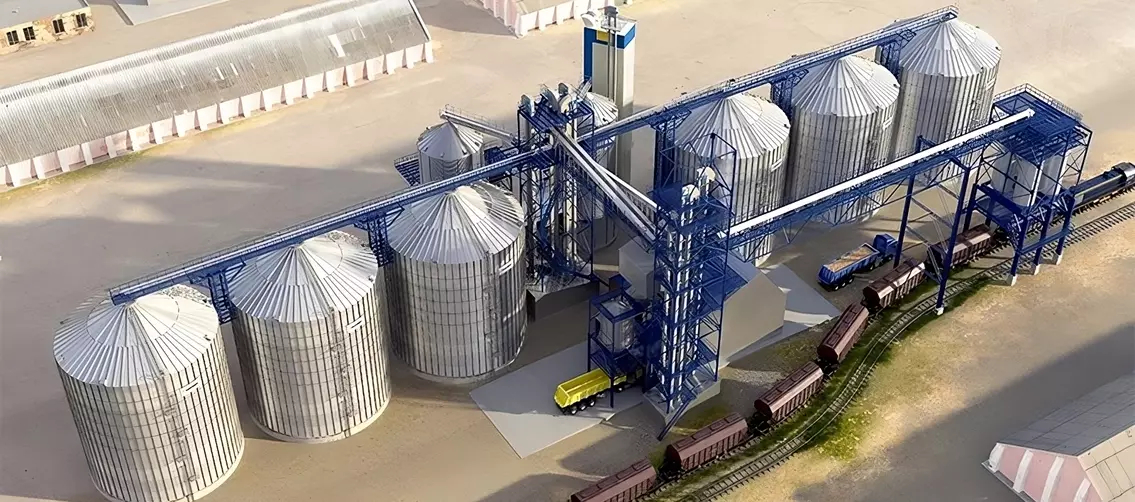
Choosing a plot of land
The main criteria to pay attention to when choosing a land plot:
Target purpose of the land. This is an issue with many pitfalls that need to be considered in advance. The ideal scenario is when the intended use of the land plot has already been defined as "industrial land". But more often there are plots with a different designation, which entails a troublesome and time-consuming procedure of changing the designation, and this procedure is not always successful.
Grain Capital specialists told about an example from practice: "One of our clients faced such a situation: he purchased land for development, which consisted of three small rectangular-shaped plots. All of them had different cadastral numbers and CPs. The side ones had industrial land, while the central one had agricultural land. No one paid attention to this nuance when purchasing. The plot was priced quite attractively, and it was purchased with the idea that the CP would be changed in the future. Design was started 5 years after the purchase. During the development of a detailed site development plan, it became clear that according to the city development plan, a county road runs through the agricultural land. The client was unable to change the CP of the land, and the enterprise had to be designed on two neighboring plots. This caused significant problems with engineering and transportation infrastructure, communications and the location of the facility itself".
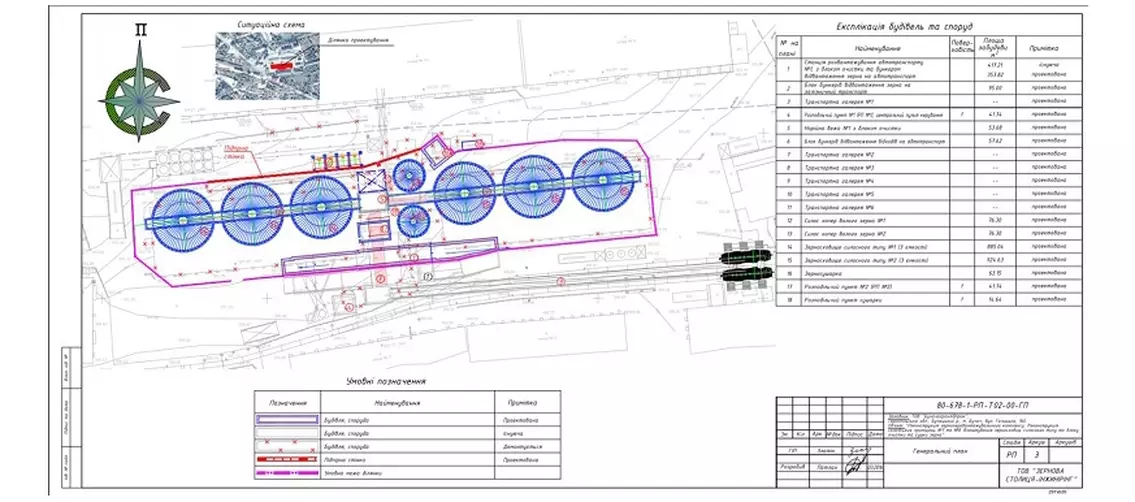
The area of the site and location of the future enterprise. The area can accommodate both large tanks for working with monocultures and small tanks for working with different crops and forming small batches. It is also necessary to take into account the fact that on the site intended for development, it will be necessary to provide space not only for tanks for storage and transportation of grain, but also for administrative and living quarters, transformer substation, fire protection tanks, water supply tanks, treatment facilities, etc.
When buying land very often do not pay due attention to geological research on the site for construction. In the future, such inattention can turn out that instead of the planned light and non-labor-intensive foundations will need to make high foundations in the fields and to carry out measures to protect against groundwater.
Geodetic surveys: As in the case with geological surveys, insufficient attention to the geodesy of the site can later lead to unpleasant surprises and additional costs for leveling the site. We advise you to pay attention to the availability of access roads (road and railroad) when selecting a site.
In order to gasify the plot, it is necessary to contact the local services of gas service providers. They will agree on the possibility and determine the points of connection to the gas transportation network. It should also be taken into account that the transportation network may have to be laid through the territories of other owners, which is quite problematic.
Before purchasing a land plot for a grain elevator, it is necessary to analyze the existing engineering communications and electrical networks on the land for construction. The possibility of connecting to the networks and the connection point is determined by the power supplying organization. It is also necessary to take into account whether it will be necessary to lay networks through the land plots of third parties.
Water supply to the grain elevator: Water is needed for drinking and household needs of the employees and for the fire-fighting system.
If there is no sewage system on the site, it will be necessary to build treatment facilities and drainage fields. These are costly solutions that require large areas.
Presence of buildings and structures on the plot. This factor can both increase the attractiveness of the plot purchase and reduce it. If these buildings can be used for laboratories, weighing rooms - this is a plus. If they cannot be used, the buildings will have to be dismantled together with the foundations, which will entail additional costs.
Only after carefully weighing up the pros and cons will you be able to make a decision on the suitability or unsuitability of the chosen site for construction.
Experts who attended the business forum noted that when choosing a site, it is important to know exactly how the elevator will operate and to assess the risks. They suggested that when selecting a site, attention should be paid to existing grain elevators for sale.
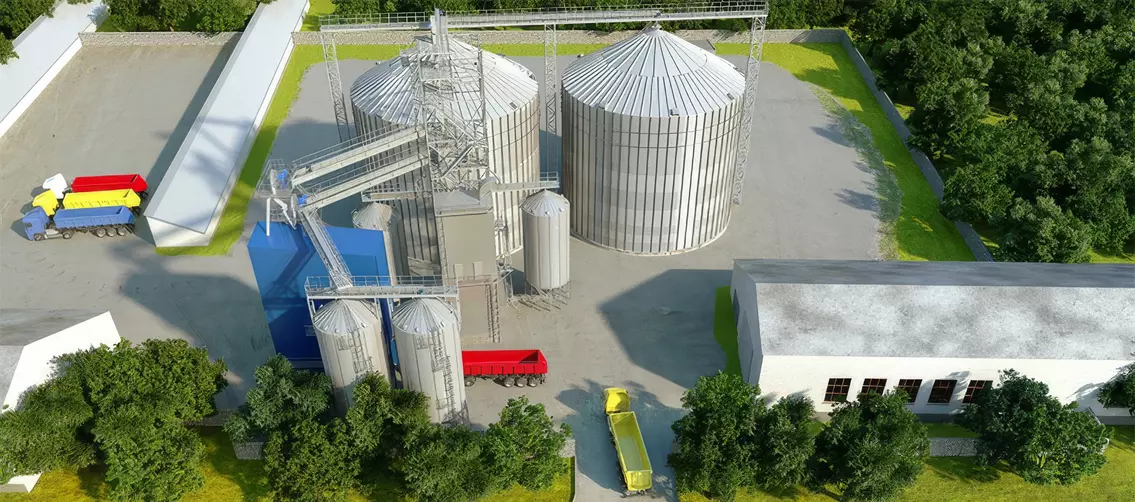
Selection of a design organization and project development.
So, the site has been selected, the company has been acquired, and then, as forum participants say, "the most interesting thing starts". That is why experts recommend choosing a designer at the site selection stage.
"We discussed the payback, discussed all possible nuances with the site selection. And in order to assess the economic feasibility, the economic feasibility of an elevator on this site, we always recommend starting the selection of the site with the designer. That is, to work together in order to understand what you can maximally place on this site. How to realize this maximally profitable for you. And accordingly, develop a feasibility study. Based on the results of this feasibility study, you can understand how much you need to invest, what actions you need to take to ensure transshipment and so on. You will understand how much you will spend on construction and implementation of this project, and roughly understand the action plan and payback period," says Igor Bilan, Chief Process Engineer at Grain Capital Design Bureau.
The specialist emphasizes that a vaguely formulated technical specification may lead to a significant overrun of the project implementation budget. And the owner will face serious problems at the stage of facility operation.
"You will say that this is the responsibility of the person who developed the project and the technical solution on the basis of which the facility is built. But often such decisions are made in a hurry, in a desire to save money, under pressure, and this is the main mistake of such decisions. In the future, the person who made these calculations under pressure will physically never be able to compensate for the expenses you will incur during project implementation," warns Alexander Glivinsky, Technical Director of Grain Capital.
Saving on the elevator's firefighting and dust suppression systems can lead to tragic consequences.
"Oddly enough, a conditional life cycle assessment of a plant makes it clear that design accounts for the smallest share of investment - about 5%. However, mistakes made during design can lead to huge unplanned costs at later stages of work", - emphasizes the manager Igor Bilan.
According to the specialist, the most effective projects today are those developed with the help of BIM-modeling. The elevator information model in BIM-modeling connects the future enterprise with all systems - infrastructure facilities, engineering networks, roads, ports and the like. And all these interconnections are considered as a single object with the enterprise. As soon as any parameter is changed, all the data related to it automatically changes, and at the same time drawings, specifications, visualizations and the construction schedule of the object change.
"It would seem that this can be said about classical design, but there it is difficult to transfer information, there is a large flow of documentation. Classical design requires a lot of additional actions," explained Alexander Glivinsky.
The forum experts noted that no design organization will give the customer an ideal project - everyone will have mistakes. But how serious they will be and how much they can be corrected during construction is a very important point. Therefore, the expert recommends not to save money on designers.
"In one conditional design organization the project costs 1 million 300 thousand UAH. In another company - 2 million 300 thousand UAH. But when you start to implement the solutions proposed by the organizations, it turns out that in the first project for the construction of the elevator tower it was supposed to use 270 tons of metal, and in the second - 210 tons. And now calculate the difference of 60 tons of metal and the cost of installation. The same with the pile field, concrete and reinforcement. Therefore, it is important not to make a mistake in choosing the right designer," expert Alexander Glivinsky shared his experience.
- Qualification of the designer. He must be able to design elevators.
- Registration of the notice of commencement of preparatory works.
- Formalization of access roads should be at least under an easement agreement.
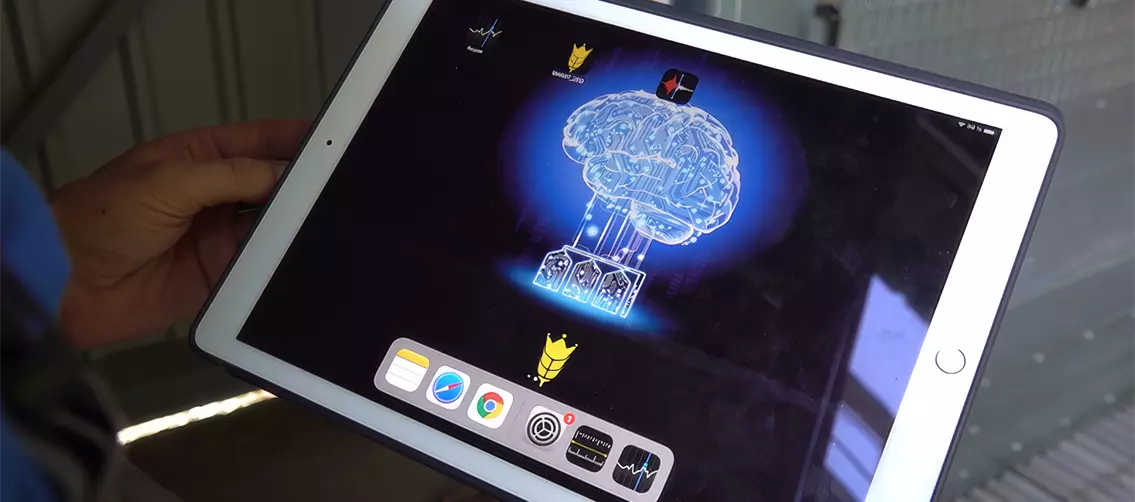
Efficiency of selected equipment
Alexander Glivinsky, Technical Director of Grain Capital, notes that if you analyze the costing for a full cycle of grain elevator operation, you will immediately notice three components that form the cost:
- Elevator personnel wages.
- Energy and resource intensity of machinery.
- Service maintenance to keep the elevator running at the required performance.
"All three indicators depend not only on the efficiency of the adopted design solutions, but also on the efficiency of the purchased technological equipment. And also on the qualification of personnel working with this equipment," emphasized Alexander Glivinsky.
According to the specialist, equipment efficiency is a complex criterion. It includes the cost of equipment operation, energy consumption for movement, and lack of downtime due to breakdowns. It can also include the minimum need for personnel intervention in the operation process.
Alexander Glivinsky named the following criteria for determining equipment efficiency:
- The operating life of the equipment before the first overhaul should be longer than the payback period of the elevator, otherwise the payback of the elevator will exceed the planned time.
- Energy consumption of the equipment should be minimized.
- The equipment must be reliable. The supplier must take into account all the features and operating conditions of the equipment in the future elevator.
- Service by in-house personnel should be minimized and maintenance costs should not exceed nameplate values.
In order for the company to be able to clearly form the tasks for preventive maintenance, Grain Capital has brought to the market an innovative product SMART-Individual.
"SMART-Individual is a system of self-diagnosis and analysis of the technical condition of equipment. It allows almost completely eliminating a person from equipment diagnostics, as well as preventing force majeure circumstances arising in the process of operation. And the customer no longer needs to maintain a large staff of service personnel," said Igor Gaponyuk, Development Director of Grain Capital.
According to the specialist, SMART technology allows for quick and comprehensive automation of the elevator at the highest level. There is no need for extremely expensive controllers and kilometers of cabling to manage the enterprise.
The technical manager of Grain Capital emphasized that before purchasing equipment, it is very important to draw up a competent technical specification for its purchase. The first criteria of the specification should be the type, design and performance of the actuator. After all, even the best quality actuator will not last long if it is not selected correctly.
"Pay attention to the service factor. For a billet elevator, it should be at least 1.3, which indicates a 30% torque reserve, as well as the strength of the gearing surface. For a port terminal, the service factor should be at least 2, but depending on the operating conditions it can be 2.5 or 3," advises Alexander Glivinsky.
He added that this applies not only to drives, but also to bearings, fans - practically all rotating elements.
Specialists also advised to purchase universal equipment whenever possible, because it is not known which crop will be more profitable for the customer to work with in a few seasons.
The general contractor at a future facility must be one, as the law requires today, says Oleksandr Sergienko, former head of the Permit Procedures Department of the State Architectural and Construction Inspectorate of Ukraine. But technical supervision can be carried out by several organizations.
Author's supervision of the project is also strict - it can only be carried out by the author of the project.
The concept of the Law of Ukraine on Architecture stipulates that you must first hire a chief architect, and then he hires anyone he deems necessary, such as a chief engineer. But all of them must have the appropriate qualification certificate.
